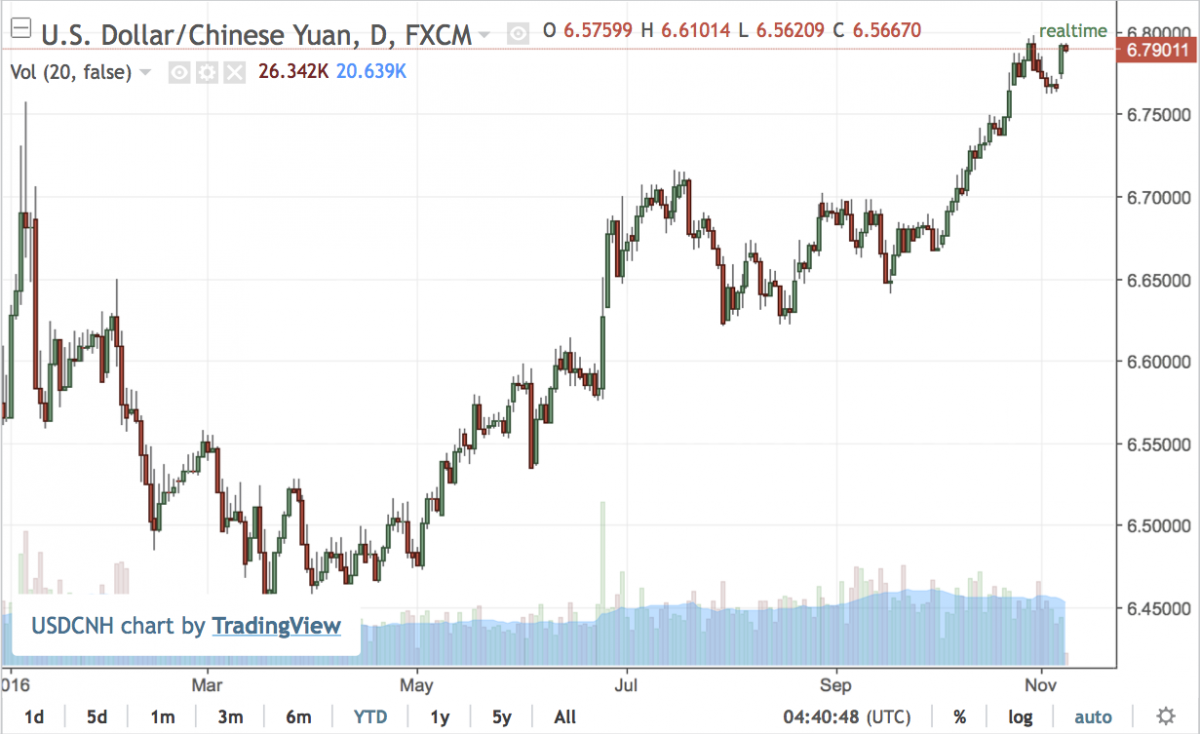How A Falling Dollar Affects Asian Exchange Rates

Table of Contents
The Dollar's Influence as a Global Reserve Currency
The US dollar's status as the world's dominant reserve currency significantly influences global trade and finance. Many international transactions, commodity pricing (oil, for instance, is priced in dollars), and debt obligations are denominated in USD. A weaker dollar, therefore, has cascading effects on Asian economies.
A falling dollar makes dollar-denominated goods and commodities cheaper for Asian importers, potentially boosting purchasing power. Conversely, it makes Asian exports more competitive in global markets, potentially increasing demand. However, this isn't a uniformly positive scenario.
- Increased export competitiveness for Asian nations: A weaker dollar makes Asian goods relatively cheaper for buyers using other currencies, leading to increased demand and potentially boosting economic growth.
- Higher import costs for Asian countries reliant on dollar-denominated imports: Countries heavily reliant on imports priced in US dollars face increased costs, potentially fueling inflation and squeezing consumer spending. This is particularly true for energy-importing nations.
- Potential inflationary pressures in Asian economies due to increased import costs: The higher cost of imported goods can translate to higher prices for consumers, potentially leading to inflationary pressures if not managed effectively through monetary policy.
Impact on Specific Asian Currencies
The impact of a falling dollar varies significantly across Asian currencies. Factors such as a country's economic strength, trade balance, and monetary policy play a crucial role in determining the response of its currency.
- Case study: How a falling dollar affected the Japanese Yen: The recent weakening of the dollar led to a significant strengthening of the Yen, highlighting the inverse relationship between the two currencies and Japan's strong economic fundamentals.
- Case study: The impact on the Chinese Yuan: China's managed exchange rate system means the Yuan's response to a falling dollar is less direct and more influenced by government intervention and its own macroeconomic policies.
- Comparative analysis: While some Asian currencies may appreciate against the dollar, others might depreciate, depending on their individual economic circumstances and market dynamics. A country with a large trade surplus might see its currency strengthen, while a country with a trade deficit may see its currency weaken further.
Investment Implications of a Falling Dollar
A falling dollar creates significant shifts in investment flows across Asia.
- Increased attractiveness of Asian assets for dollar-based investors seeking higher returns: A weaker dollar can make Asian assets, like stocks and bonds, more appealing to foreign investors seeking higher returns. This can lead to increased capital inflows and bolstering Asian markets.
- Potential for capital flight from Asian markets if investors seek safer havens: Conversely, uncertainty surrounding the dollar's decline could trigger capital flight from Asian markets as investors seek safer havens in more stable currencies.
- Impact on the cost of borrowing for Asian businesses with dollar-denominated debt: Asian businesses with dollar-denominated debt will find their borrowing costs increase as the value of their local currency falls against the dollar.
Geopolitical Ramifications of a Weakening Dollar
A falling dollar has far-reaching geopolitical implications for Asia.
- Potential for trade disputes as countries compete for export markets: As the dollar weakens, Asian nations may engage in intensified competition for export markets, potentially leading to trade disputes and protectionist measures.
- Influence on regional power dynamics and relationships: Currency fluctuations can influence the relative economic strength of Asian nations, affecting their regional standing and diplomatic relations.
- Impact on global financial stability: The dollar's volatility and its influence on Asian economies could have broader implications for global financial stability, potentially leading to increased market uncertainty.
Conclusion: Understanding the Interplay Between a Falling Dollar and Asian Exchange Rates
A falling dollar significantly impacts Asian exchange rates, creating a complex interplay of winners and losers across different economies and sectors. Understanding these dynamics is crucial for investors, businesses, and policymakers navigating the Asian market. The effects range from increased export competitiveness to higher import costs and potential capital flight. Staying informed about the fluctuating value of the US dollar and its influence on Asian markets is essential for making sound economic decisions. Further research into specific country analyses and the ongoing evolution of global currency markets is recommended for a deeper understanding of how a falling dollar affects Asian exchange rates.

Featured Posts
-
 Suki Waterhouse Partners With Michael Kors For Amazon Launch
May 06, 2025
Suki Waterhouse Partners With Michael Kors For Amazon Launch
May 06, 2025 -
 Priyanka And Nicks Holi A Detailed Look At Their Festive Fun
May 06, 2025
Priyanka And Nicks Holi A Detailed Look At Their Festive Fun
May 06, 2025 -
 Is There An Age Gap Tracee Ellis Ross Discusses Her Dating Preferences
May 06, 2025
Is There An Age Gap Tracee Ellis Ross Discusses Her Dating Preferences
May 06, 2025 -
 Luca Guadagnino Casts Patrick Schwarzenegger In Lead Role
May 06, 2025
Luca Guadagnino Casts Patrick Schwarzenegger In Lead Role
May 06, 2025 -
 Chris Pratt Comments On Patrick Schwarzeneggers White Lotus Steamy Scene
May 06, 2025
Chris Pratt Comments On Patrick Schwarzeneggers White Lotus Steamy Scene
May 06, 2025
